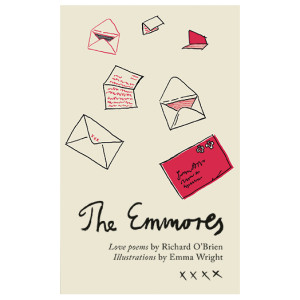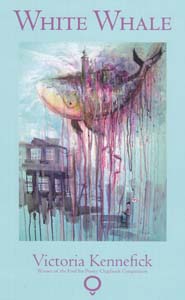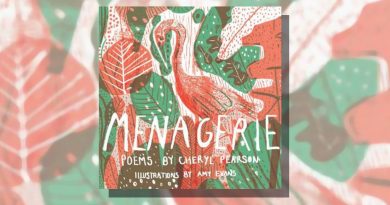The Emmores by Richard O’Brien
-Reviewed by David Clarke–
Richard O’Brien’s short pamphlet of 13 poems, The Emmores, takes its punning title from Ovid’s Amores, by way of Christopher Marlowe’s translation, and also honours the name of the Emma to whom these love poems are addressed. Although not a narrative sequence, most of the poems describe a period of separation between the poet and his lover. Despite taking their cue from Ovid, and in one case re-working one of his elegies with a nod to Bob Dylan (‘Then Came Corinna…’), this is not poetry of lust and adultery, focusing instead on constancy and intimacy. On the face of it, this seems to fit well with the mission of the (in this case) appropriately named Emma Press, which is ‘dedicated to books that are sweet, funny, and easy on the eye’. However, there is a lot more going on in O’Brien’s elegant and witty verse than such a description would suggest.
In many ways, O’Brien puts me in mind of Roddy Lumsden, although The Emmores has none of the rakish machismo of Lumsden’s own The Book of Love. Both are keenly interested in form, have a beguiling way with rhyme, enjoy combining rarefied vocabulary with more colloquial turns of phrase, and are capable of delighting the reader with surprising imagery that emerges as if by sleight of hand from carefully constructed progressions of ideas. In O’Brien’s verse, these effects combine convincingly to create a love poetry that is almost courtly in its complexity, like a finely wrought love-token, and deeply pleasurable to read.
A poem which displays all of these features is ‘Desire Path’, which takes its title from those direct and convenient tracks that pedestrians carve out in landscaped lawns, rather than following the path the planner has designed for them. The conceit of the poem is that it is not only distance that holds the two lovers apart, but the land itself, which wilfully interposes itself between them. Although the poet admits that ‘it’s hard to argue with cartography’ or with the ‘half the country’ which is ‘against’ them ‘as things stand’, he also suggests that, at least in the imaginative space of the poem, things do not have to ‘stand’. He then imagines the land between then disappearing:
Tonight the landscape is a blot upon itself,
its contours are a sad excuse for yours,and if I could I’d call tornadoes down
to wrench up roofs of Colleyweston slate,
disintegrate unyielding drystone walls
and crazy-pave a path across the fields
to your door.
Although by no means entirely regular throughout, here O’Brien’s carefully weighted lines keep returning to a satisfying pentameter, but one which never constricts the poem or becomes over-bearing. Alongside his subtle use of internal rhyme, O’Brien gives each stanza at least one end rhyme, although not always in the same place. As with the meter, this irregular chiming allows for a sense of elegant musicality and form, without the poem becoming overburdened or bent out of shape by its own constraints. As a jeu d’esprit, the poem is beguiling, and although technically accomplished, never feels like it is showing off.
Many of the poems proceed from a comparable conceit, but none of them have the feel of heavy-handed workshop exercises to them. For instance, in ‘Magician’s Assistant’, the poet becomes the eponymous helper to his lover, who is in the role of conjurer. Although I approached the poem with some trepidation, fearing I could be in store for quite a bit of strained metaphor, I never felt I could see what was coming next:
Your sequined foot unsticks the clutch.
Unchoreographed, our belts click shut.
An escapologist is never stuck.
So, although most of these poems may be rather more about longing than they are about the art of seduction, they certainly are seductive, if the kind of seduction you are after is one that involves wit and intelligence; and if the kind of wit and intelligence you find seductive is the kind that would rhyme ‘Uzès’ with ‘overhead’, for instance.
The presentation of this pamphlet also needs some consideration, particularly as the press has chosen to include illustrations: by the editor herself, in fact. These have a doodle-ish quality to them in some cases, but also anchor the poems in the poet’s own personal life by showing a likeness of him with his partner on the title page, for instance. I was not entirely convinced that this added anything to the pamphlet, although the quality of the paper and the printing, combined with the illustrations, certainly give it the feel of a desirable object. I wondered why the poems, which stand very well on their own and are perfectly accessible, needed to be so closely drawn back to the poet’s own personal circumstances, although this is undoubtedly the context they emerge from. Also, in the case of the illustration for ‘Poem for the Julian Calendar’, where the poet imagines escaping with his love to that none-time represented by the days lost in the shift from the Julian to the Gregorian calendar, the rather literal illustration of the poem’s fantastical imaginings rather broke its spell for me. This is not a major complaint, as the pamphlet is certainly attractive to look at, but does raise the question about the function of illustrations if the press intends to continue in this vein.
As for the poetry on offer here, it can be thoroughly recommended. This is one of three pamphlets O’Brien has published since 2009, and I certainly look forward to reading a more substantial collection of his work.





